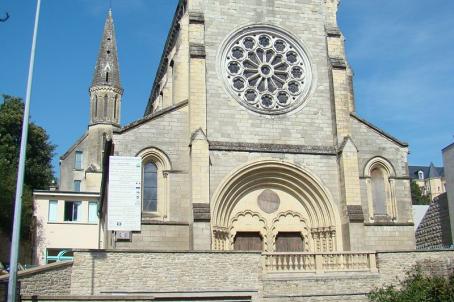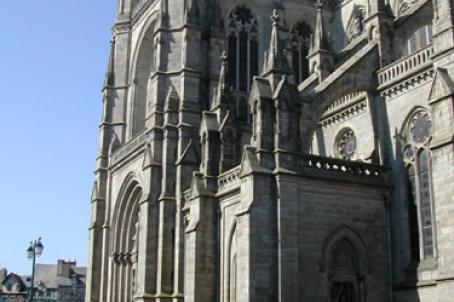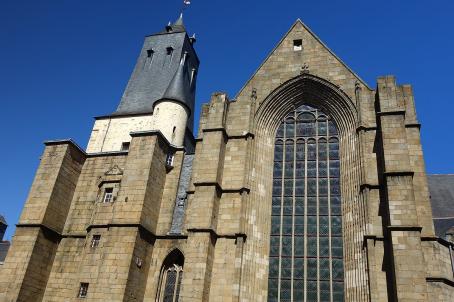Church of Notre-Dame de Saint-Melaine
Notre-Dame church is an old abbey church from the 11th century, rebuilt in the 14th century. The place of worship today is a composite building in Romanesque and Gothic style, behind a classical and neoclassical bell tower.
About this building
The abbey, whose foundation dates back to the 6th century, is the oldest in the department and one of the most important in the west of France between the 11th century and the Revolution. This long history, which began near the burial place of Mélaine, former bishop of Rennes, is marked in particular by the work of the Benedictines from 1030 and the Maurists in the 17th century. The architectural remains that remain today are mainly the west wing of the monastery buildings, which housed a hospital from 1793 to 1939; a cloister gallery adjoining the previous building; the former abbey house, which became the bishop's palace in the 18th century and then the administrative building from 1905; and the church, a complex building representing a concentrate of architectural evolution from the early Middle Ages to the 19th century.






